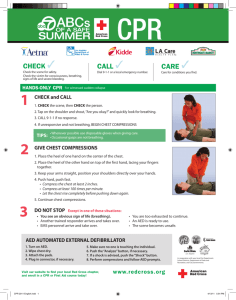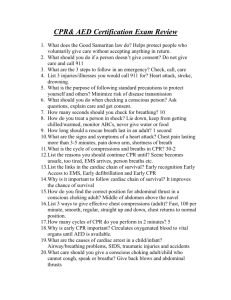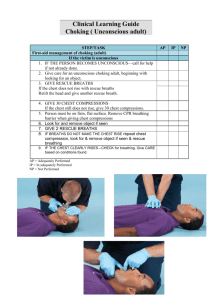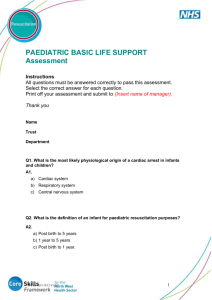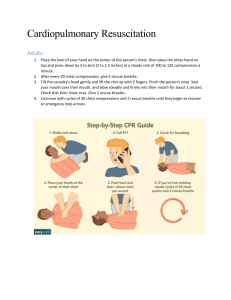CPR Review - Waukee Community School District Blogs
advertisement
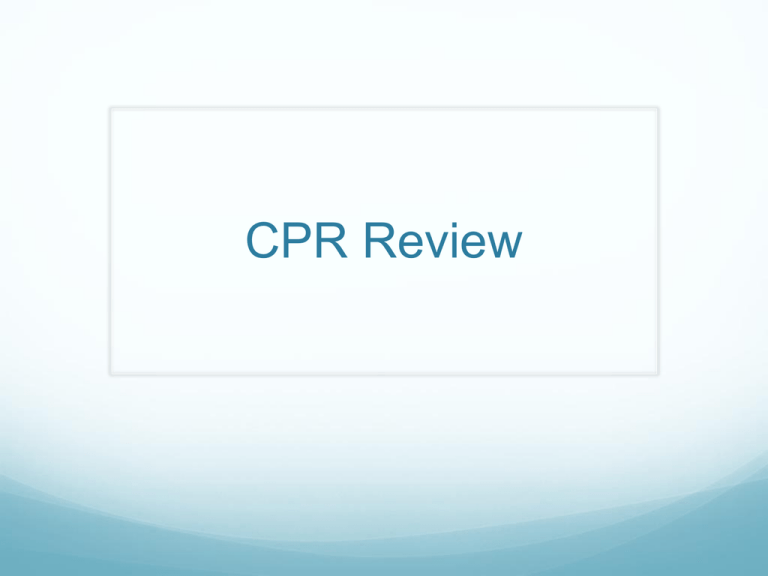
CPR Review Before Giving Care Good Samaritan law – protects people who voluntarily give care. Ask for consent: if person says no – do not give care and call 9-1-1 In an emergency: Check, Call, Care Standard Precautions – minimizes the risk of disease transmission. Cardiac Emergencies Pain or discomfort in the chest that lasts more than 3-5 minutes Nausea Pain in neck, arm, jaw, back Pale skin Sweating **Cardiac Emergencies in infants and children can be caused by: airway and breathing problems, SIDS, injuries, or accidents CARDIAC CHAIN OF SURVIVAL **helps to improve the chance of survival! Early recognition – early access to EMS Early CPR – helps to circulate the blood that contains oxygen to the vital organs until an AED is ready to use or advanced medical care takes over. Early defibrillation Early advanced medical care In an Emergency… Check the Scene Check for responsiveness Call 9-1-1 Check for breathing (no more than 10 seconds) Scan for severe bleeding Start CPR cycle (30 chest compressions 2 rescue breaths) CPR CYCLE adult, child, infant 30 chest compressions for every 2 rescue breaths. In 2 minutes, you should perform 5 CPR cycles Rescue Breaths/Chest Compressions Rescue breaths should last 1 second, enough to make the chest rise. Compress the chest straight down and fast, about 100 compressions per minute. Give chest compressions that are smooth a regular. Adult and Child – chest compression should be 2 inches deep. Infant – chest compression should be 1 ½ inches deep. Place one hand on the forehead and 2-3 fingers on the center of the chest. Continue CPR until… Person shows signs of life EMS or another trained responder takes over Your are too exhausted to continue AED arrives Scene becomes unsafe Breathing Emergencies Signs of trouble: Agitation – state of anxiety or nervousness Flushed, pale, gray, or bluish skin color Slow or rapid breathing Gasping Cannot cough, cry or breath Coughing forcefully High pitched wheezing sound Conscious Choking If coughing – encourage victim to continue to cough. Child or Adult – position your fist in the middle of the abdomen, just above the navel when giving abdominal thrusts. Infant – give 5 back blows and then 5 chest thrusts to clear the airway. Back Blows - Position infant face-down, with the infant’s head lower than his or her chest.

